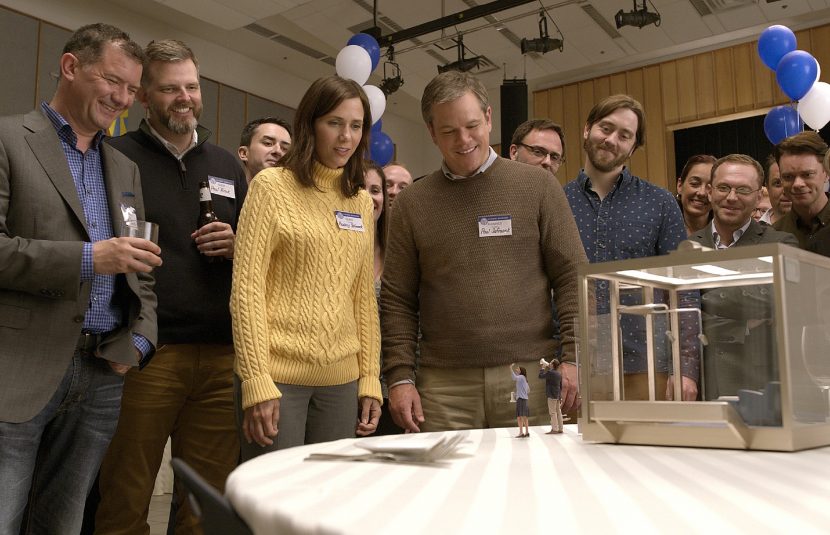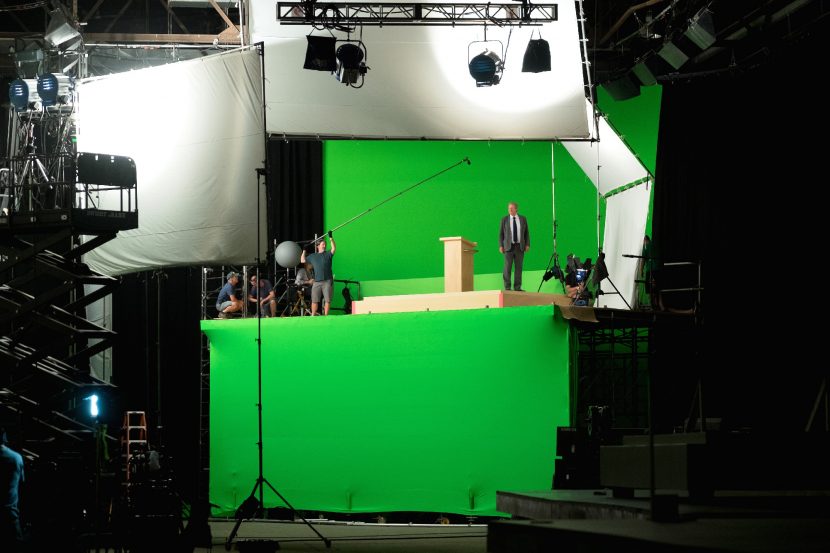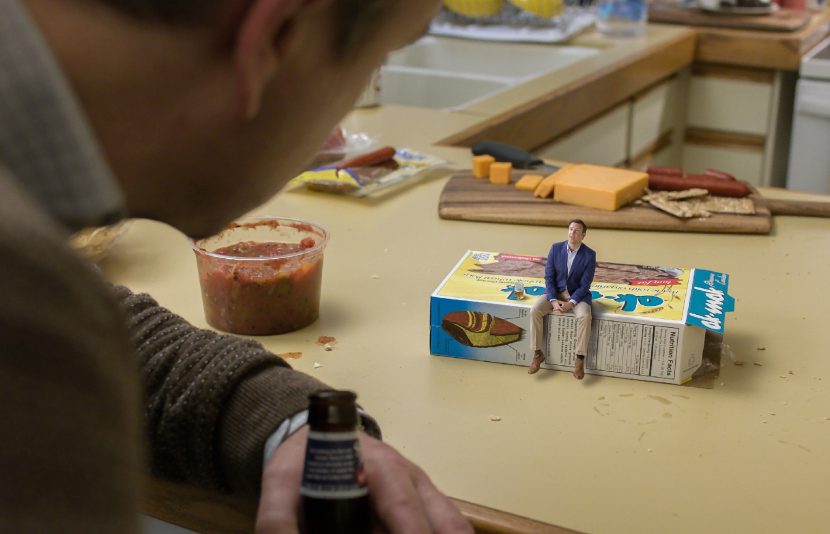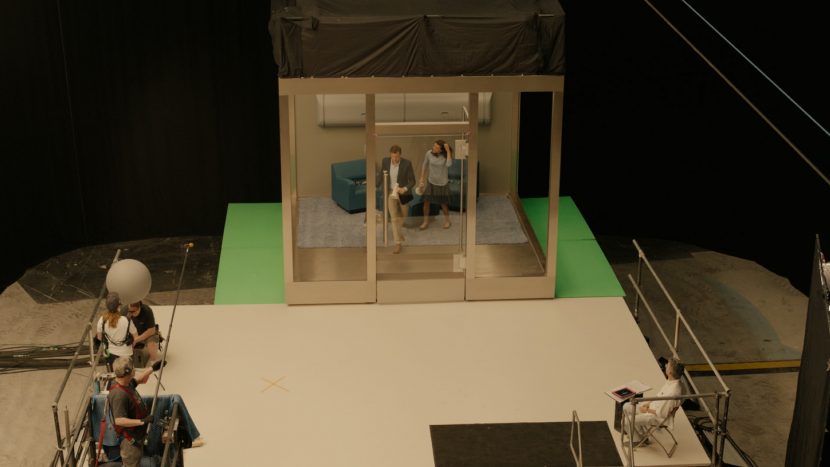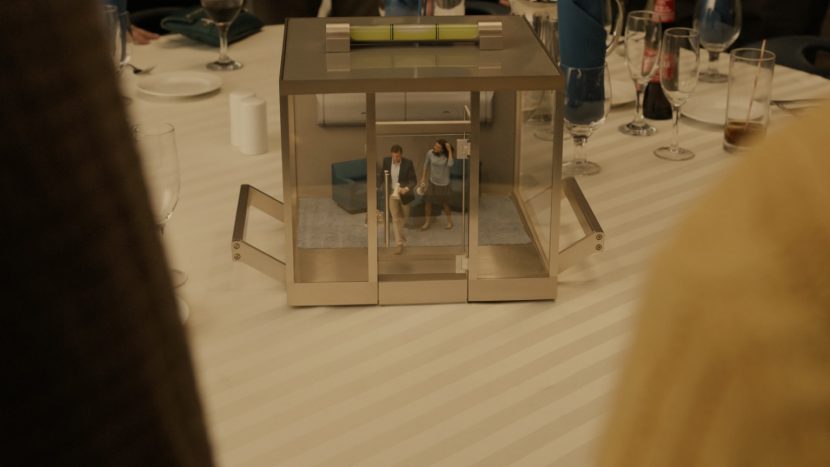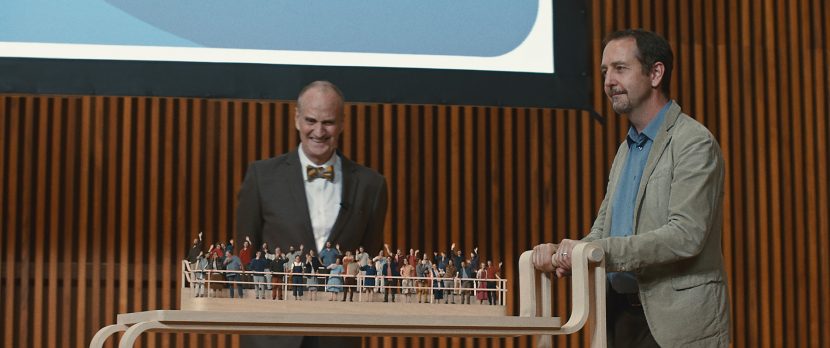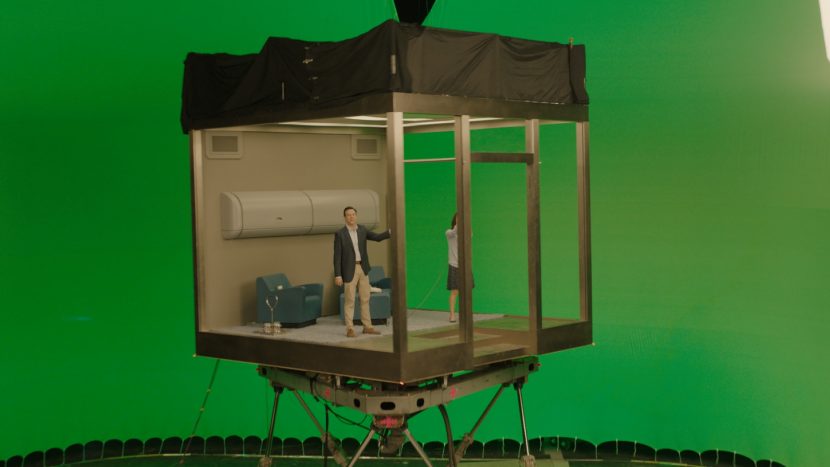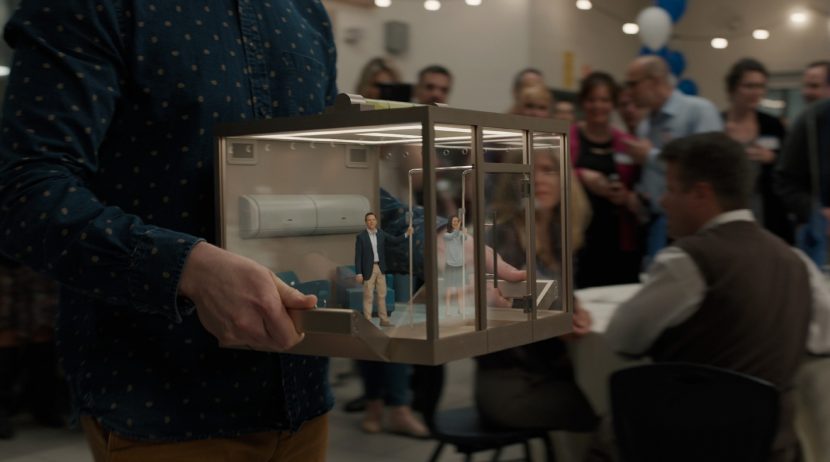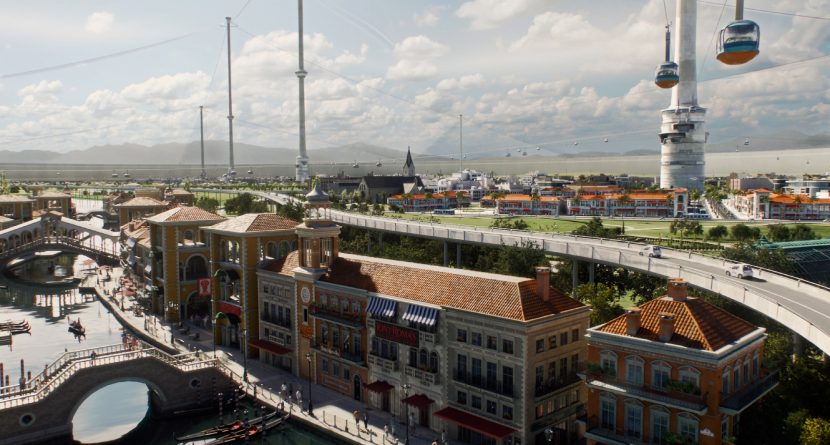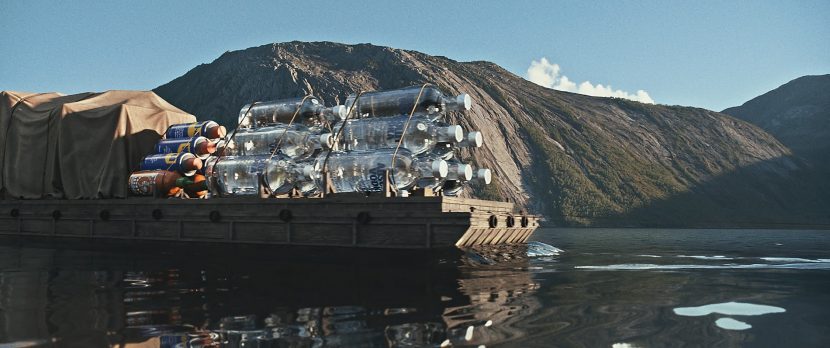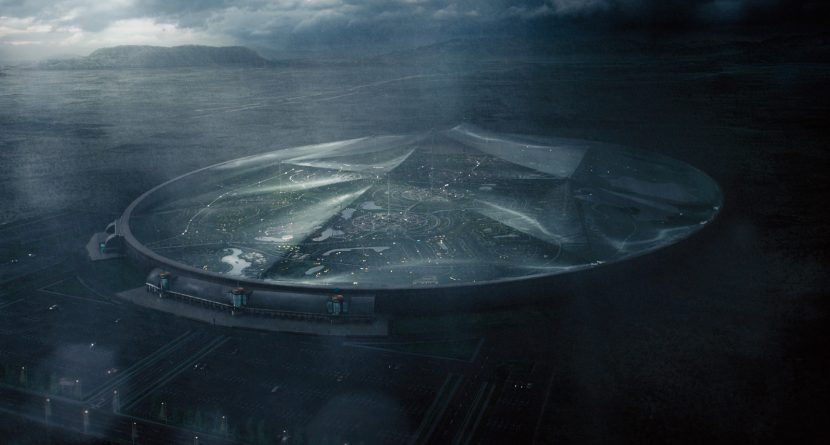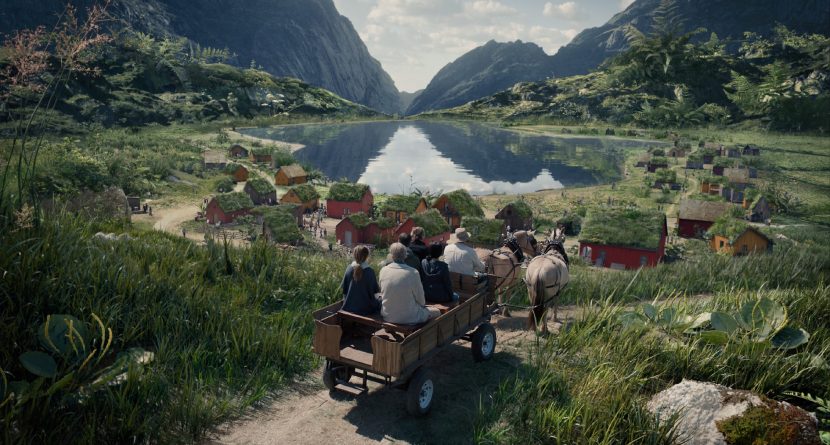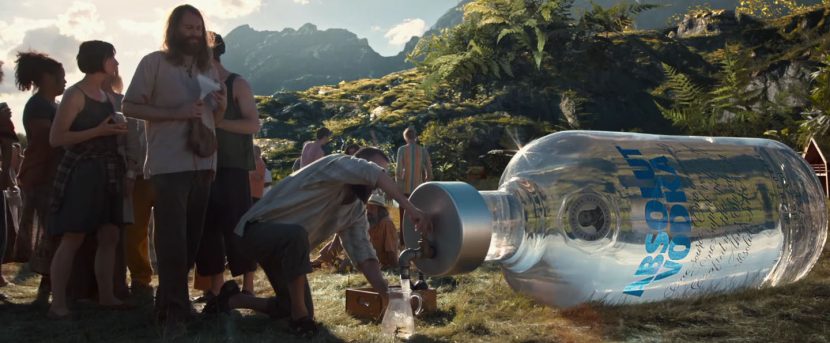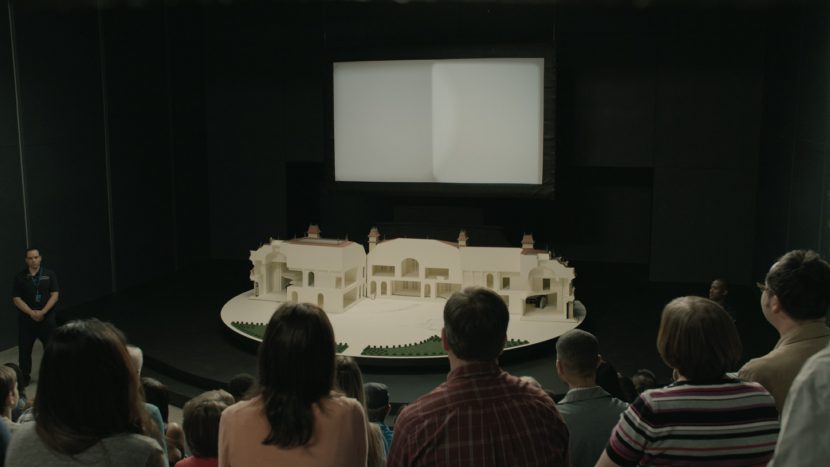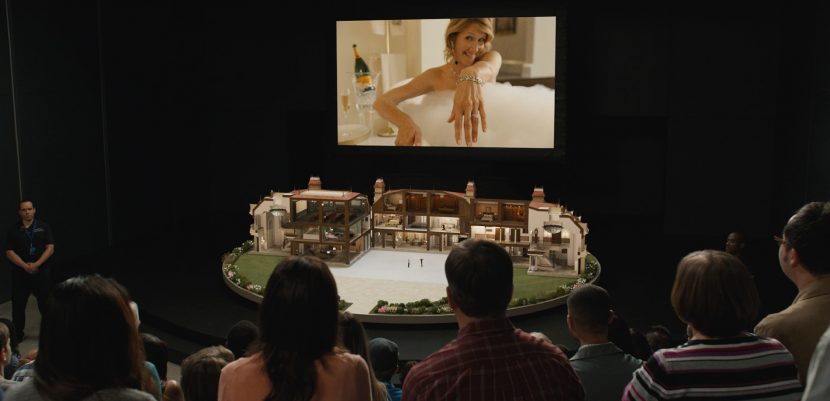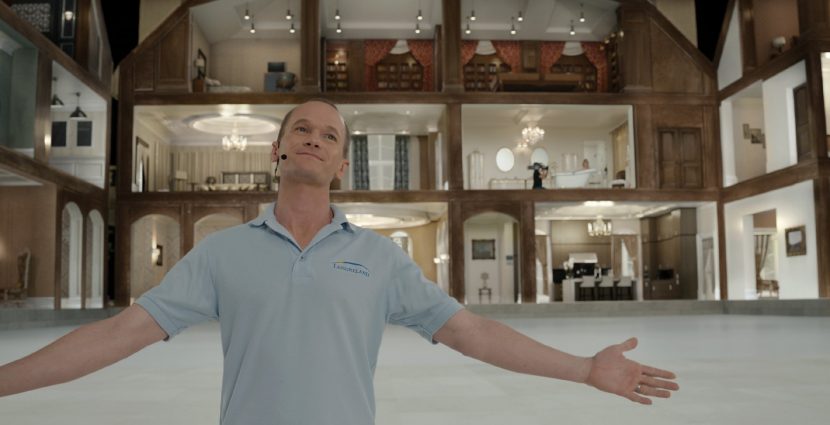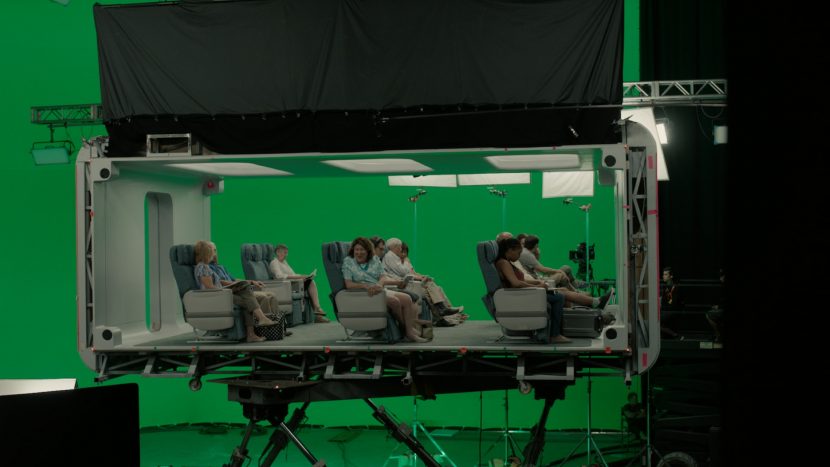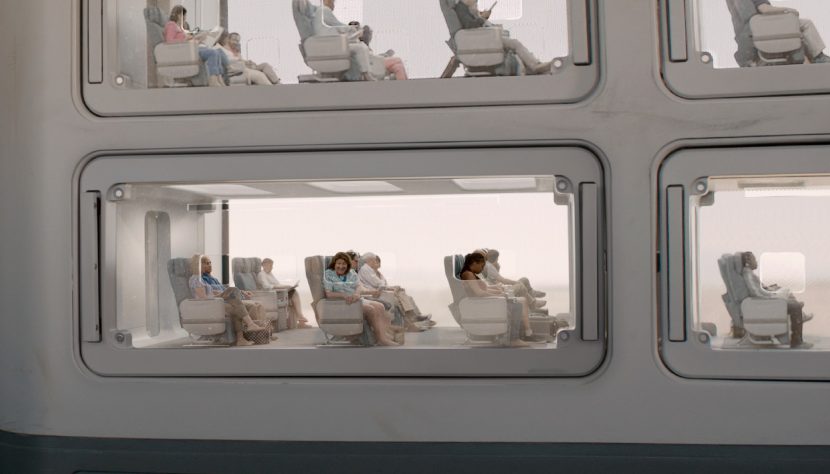Lindy De Quattro was the ILM visual effects supervisor on Director Alexander Payne’s Downsizing, with James Price as the studio Visual Effects Supervisor. The film takes place in a world where scientists have discovered how to shrink humans to five inches tall as a solution to overpopulation. Paul (Matt Damon) and his wife Audrey (Kristen Wiig) decide to abandon their stressed lives in order to get small and move to a new downsized community – a choice that triggers life-changing adventures, when Audrey backs out at the last minute.
The original pre-production began years ago in 2009, but the project was put in a turn-around when Director Payne decided to put it on hold while he focused on The Descendants, and then, Nebraska.
Lindy De Quattro enjoyed working with the director, but the whole crew joked that Payne is really a documentary filmmaker, but in this case he was documenting miniatures, such was the director’s attention to detail. Far from guessing, the set’s in the tiny Leisureland were designed with an urban planner, the scale of the props was accurate, and the plants in Norway were local to the region. Everything was as accurate as possible, “so many things I just don’t normally spend my time thinking about… such as are the sideways the right width? Are the housing lots square? How many trees are planted? When were they planted? It just went on and on… which was great,” she jokingly recalls.
De Quattro, who’s screen credits include supervising on The Great Gatsby and Pacific Rim, commented that while there were over 700 shots, “it was really important to Alexander (Payne) that this not be an ‘effects picture’. He really wanted the audience to get caught up in Paul’s journey and not think about it – just accept he was small.”
Illusion of Optics: Depth of Field and Sharpness
When filming actual very small scale objects, the depth of field is greatly reduced. Just as filming miniatures to look normal requires vast depth of field, any normal wide shot with exceptional and unexpected depth of field looks like a miniature. Furthermore if an actor or prop is just scaled down as part of a composite, it seems to gain apparent sharpness. Right from the start, Lindy De Quattro with James Price had to work out the rules by which the world is filmed via VFX. The team decided on a rule for the film. “Potentially for every shot, every time you had a small person in the frame you could add depth of field and put all the background out of focus – to the point you are not even aware of where they are. We had lengthy discussions and decided that if the person’s point of view is a normal person’s POV we would shoot with a normal sized camera. But if the POV was that of a small person we would shoot with a theoretical ‘small’ camera were all the optic and characteristics were shrunk down, and thus it behaves like a normal camera.” This mean big people talking to big people, or little people talking to little people – then the optics are relatively normal. But when you mixed the frame with two different world’s then the team would carefully control the lensing and depth of field.
Part of the solution was creative, and “part of it, quite frankly, was budgetary or we’d have ended up with 2500 effects shots in the film,” De Quattro explains. Once the team set up the rules, the execution become relatively simple. For shots where Paul or one of the other small people was in shot with a large person, the team filmed with a doll as reference. For fun the team scanned a bunch of the crew and the dolls used in lineup were the crew that was making the film. “We put them on little stands in every scene. There was a lot of advantages of doing it, it gave the camera operator something to focus on, it gave the actors eye lines and it gave us lighting cues,” she explained. For the extra work of digitally removing the dolls, the team at De Quattro felt it was more than worth it in terms of a faithful reproduction of the optics and getting the right level of sharpness with defocusing.
The reverse is a different problem. From the small person’s point of view looking up, the team needed a very long lens with all the (giant) background in focus, which informed the background plate photography.
Physics of Small
Another major difference with scale is gravity, or rather that it is a constant. As gravity does not scale, for decades film makers have had to shoot miniatures in slow motion. The process of slowing a falling object makes one read the object as a different scale. A fact played with by the filmmakers in the end scene when the tiny mine shaft entrance is blown. The original plan was to actually shoot a miniature mine entrance and composite it in, but the shot became a digital. “We were like – no – let us do it and we can make it really funny,” recalls De Quattro. She had worked with Rodeo FX on Pacific Rim and she got the team to help with the simulation on that shot. “They are really good on that comedic animation, they just have a knack. But of course the first animation we saw was a normal sort of simulation… and I was like ‘no, no, take out all the detail, all the fine bits, we need to feel over scale’. We played with timing and it was their idea to have the last little rock fall down as a punctuation”.
The end result is a shot that looks remarkably like the effects team blew a fake ‘rock face’ on a train set, with all the humor that provided.
Water scale
One element that posed multiple issues was water. Muck like gravity, surface tension on water and micro waves are all key signs of scale. Many an effects film in years past has failed in scaling up miniature water, with the end result that the shot looked fake. For example, when the barge or boat is motoring in Norway, was it moving over tiny water? The team needed to decide as the script called for sunset shots over the ‘lake’. The problem for ILM was if they correctly got the scale ‘wrong’, and thus the water looked wrong, would the shots just seem fake and unconvincing?
The solution was to ignore moisture or sweat on any character, and leave this at the characters’ scale. The rain was solved by showing a fine netting above Leisureland and thus the concept was that the rain was turned into a mist that at Paul’s level would feel like normal rain size. But when it came to the surface water of the lake etc, the effects team had all the same discussions. They started with the shot of the barge arriving at the Norwegian village, “our first reaction was this looks too simple,” De Quattro comments. “We thought we needed multiple scales of waves to get visual complexity, we need debris on the water surface,etc … and so we added and added. But then we said ‘oh now it looks large scale’, we had added so much we lost the sense of it being at a different scale so we ended up stripping a lot of that out”. They ended up with a shot design that was very close to their first version, and that this initial look was the most authentic and served the story the strongest.
Plant life
The plants and dragonfly all were at a different scale at the village. ILM did a lot of research. Lindy De Quattro flew to Norway in preparation for the end village sequence. “I did a ton of research, I spent 3 weeks with a Norwegian film crew. We’d helicopter to the top of the fjords and we’d look around until we found something that looked promising, then with a snorkel lens mounted on the camera we’d dolly on tracks, – we’d slowly move the lens through the foliage, 3 feet off the ground.” This footage was edited as post-viz for the film and gave the ILM artists excellent reference for the CGI foliage they would add. “We rebuilt everything in CG, as we had specific things we wanted to do with the lighting,’ she adds. “This helped with the look, the transparency of the leaves, the level of dew, – Alexander was very adamant that we be authentic to that location, so all those plants are native, and that dragonfly is the Cg double for the actual Dragonfly I saw up in the fjords.”
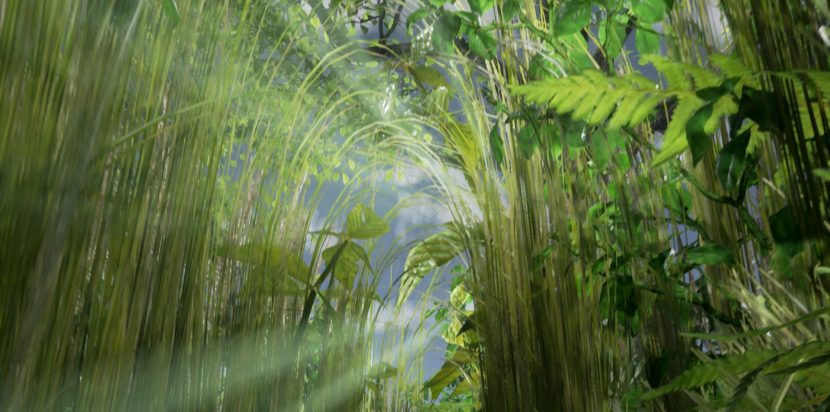

Halon did the previs for the film, referencing material and worked closely with ILM.
In Norway, the village set was heavily extended. The set was built in Milton, outside Toronto in Canada. It was a partial set with part of the meeting house and just about 8 of the surrounding living huts. The effects team replaced all the roofs (made of over scale plants), added additional ground plants and extended everything beyond the main street. The scene where our heroes are travelling to the village was shot on green screen, and nearly all the environment other than the actors is CGI.
ILM’s Thang Le was their visual effects Art Director. Thang Le joined Industrial Light & Magic in 2009 as a concept artist, his previous credits include Star Wars: The Force Awakens, The Avengers and Tomorrowland. He was responsible for leading a team of concept artists and designing and illustrating the various environments, vehicles, cities and villages.
The digital plants were not just used for Norway. As a plot point Paul (Matt Damon) carries a giant rose bud earlier in the film. While there was a prop for Damon to hold, the director was not happy with the translucency of the prop so the effects team at Framestore digitally replaced the actual prop rose with a digital version in almost every shot.
Doll house
While there were many 14x times scale props used, many of these were digitally replaced but as a rule the scale was consistent. One of the most interesting sets was the doll like house that is used as part of the introduction to Leisureland. The effects team went to actual large estate homes, they scanned them for both structure but also textures and materials. “We had three levels of house, the 8000sqft, the 6000 sqft and the 4000 sqft house. We had ten versions of each level, we had churches and other commercial buildings, car charging stations – a whole lot of reference like that we pulled from real structures”, she said. They also went to various manicured suburbs to get the exact look that director wanted which was “fantastically banal”.
The perfect Dollhouse set is where Jeff Lonowski (Neil Patrick Harris) sells the dream of Leisureland. The production built a shell of a dollhouse for that scene, but ILM ended up replacing the whole thing with a CG version of the house. The team found a series of mansions and identified key rooms in each which they then photographed and incorporated “into this made up house with the mood the director was trying to achieve… Leisureland is sold as a dream, but it is effectively a prison with high walls.”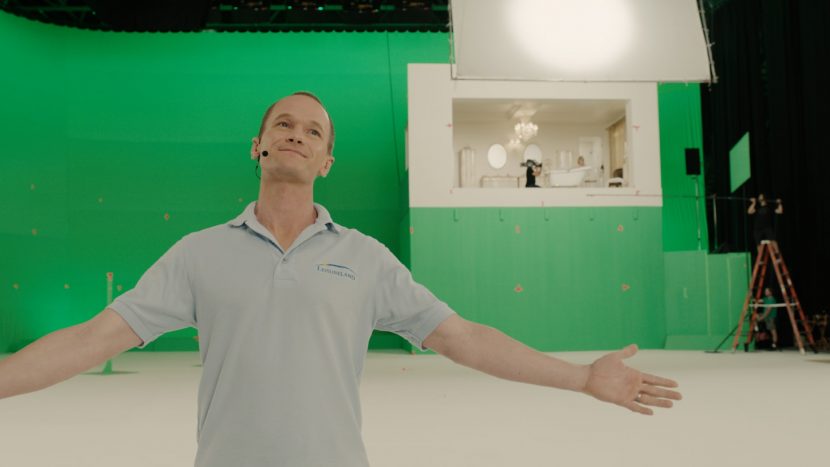
The ILM team rendered a lot of the CG in V-Ray, but there was somewhat of a mashup, with some straight CGI but some was re-projection in Nuke with paint over. “There were different tools used. The actual Leisureland asset was too big to render in one pass, the city was the equivalent of seven miles long and 5 miles across, – we couldn’t even load it, so we had the houses instanced and then we just rendered the part that was visible, it was a giant asset,” explained De Quattro.
The rendering and visual effects are extremely phoreal, so much so that in the end, much of the effects work that ILM and the other effects houses contributed will be invisible to many in the audience. For example when Paul first arrives in the tiny Leisureland city almost all of the drive from the arrival hall to his house is CG. “Even the view across the street from his house is all CG,” she explains, “including the car he is driving in… we were shooting in Canada so even the lighting was not right for New Mexico where Leisureland was meant to be, hence it is all CG”.
Footnote:
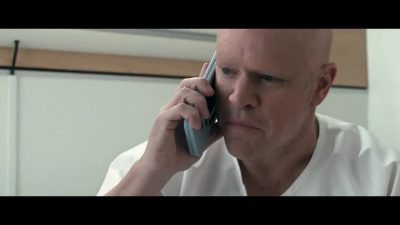 If you are wondering, everyone had their heads shaved except Matt Damon. He wore a skull cap which was enhanced with digital makeup and his eyebrows were digitally removed by Lola VFX in LA (who also digitally shaved his legs and arms for the wide shots on the hospital bed). This was not due to the actor being precious, but because at the time he was still doing pickups on The Great Wall so being hairless would have been harsh for the other production. In fact, Damon was such a good sport, according to the VFX team, he agreed to be scanned virtually naked for his digital double, and was very accommodating to the requirements of all the complex VFX.
If you are wondering, everyone had their heads shaved except Matt Damon. He wore a skull cap which was enhanced with digital makeup and his eyebrows were digitally removed by Lola VFX in LA (who also digitally shaved his legs and arms for the wide shots on the hospital bed). This was not due to the actor being precious, but because at the time he was still doing pickups on The Great Wall so being hairless would have been harsh for the other production. In fact, Damon was such a good sport, according to the VFX team, he agreed to be scanned virtually naked for his digital double, and was very accommodating to the requirements of all the complex VFX.

